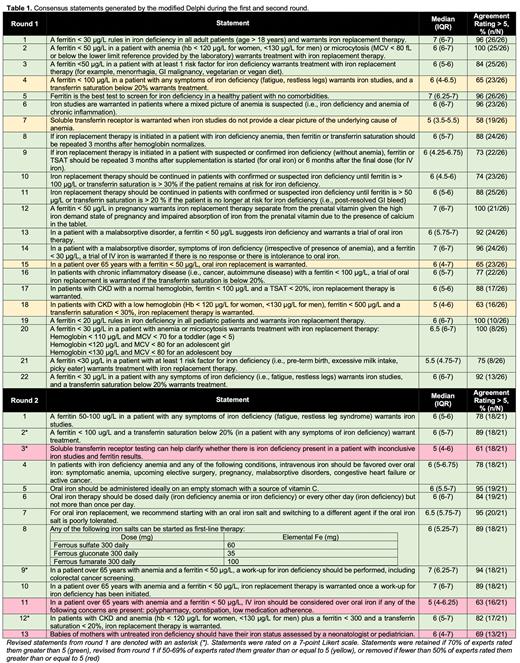Abstract
Introduction: Iron is an essential nutrient, required for various physiological processes. However, iron deficiency is highly prevalent worldwide and is an issue of health inequity. Iron deficiency can result in iron deficiency anemia (IDA) as it greatly influences the synthesis of hemoglobin. IDA can result in significant morbidities such as delayed motor and cognitive development in children, mood disorders, impaired immunity, heart failure, and decreased health-related quality of life. Despite its high prevalence, there remains uncertainty on the clinical applicability and evidence-base of iron-related lab test cut-offs. Routine diagnostic tests for assessing iron stores include serum or plasma ferritin and iron studies such as transferrin saturation (TSAT). While these tests are widely utilized, they are highly influenced by various confounding factors and may not always be an accurate reflection of true iron levels. Therefore, the current ferritin decision limits for the diagnosis of iron deficiency may not be clinically appropriate nor scientifically grounded.
Objective: Given the complexity of determining appropriate clinical decision limits for ferritin, there is a role for consensus-driven clinical decision making. A Delphi method is one such process for achieving consensus between experts. We performed a modified (electronic) Delphi study to determine clinical decision limits for serum ferritin in commonly encountered patient populations with the goal of facilitating proper identification and management of iron deficiency.
Methods: A modified Delphi study was conducted with various clinical experts who manage iron deficiency across Canada. Statements about ferritin decision limits were generated by a steering committee and then distributed to the expert panel to vote on the agreement with the aim of achieving consensus and acquiring feedback on the presented statements. The steering committee determined a priori criteria for how responses would be managed. Using a 7-point Likert scale, statements with at least 70% of experts rating agreement as a 5 or higher were retained in the final consensus statements. Statements with 50-69% of participants rating agreement as 5 or higher were revised based on qualitative feedback provided by the experts; the revised statements were reviewed by the expert panelists in the subsequent round. Statements with fewer than 50% of experts rating agreement as 5 or higher were discarded as planned a priori.
Results: Twenty-six clinical experts across 10 different specialties such as Clinical Biochemistry, Family Medicine, Pediatric Hematology, General Internal Medicine, and Hematology took part in the study. During the first round, 22 statements were reviewed by experts: 18 achieved consensus, 4 statements were revised with qualitative feedback for the second round, and 9 new statements were added based on qualitative feedback from the first round. During the second round, 13 statements were reviewed of which 10 achieved consensus, for a total of 28 statements (see table 1) and 3 statements were removed. Statements that achieved consensus addressed ferritin decision limits in various populations (including patients with multiple comorbid conditions, pediatric patients, and pregnant patients), ferritin testing frequency, and iron replacement therapy.
Conclusion: Using a modified Delphi process, the consensus statements generated by the expert panel corresponded with current evidence-based literature. These statements provide clarity to facilitate clinical decisions around the appropriate detection and management of iron deficiency.
Disclosures
Sood:AstraZeneca: Speakers Bureau. Sholzberg:Novartis: Honoraria; Medison: Honoraria; Pfizer: Other: Unrestricted research funding ; Amgen: Honoraria, Other: Unrestricted research funding.
Author notes
Asterisk with author names denotes non-ASH members.


This feature is available to Subscribers Only
Sign In or Create an Account Close Modal